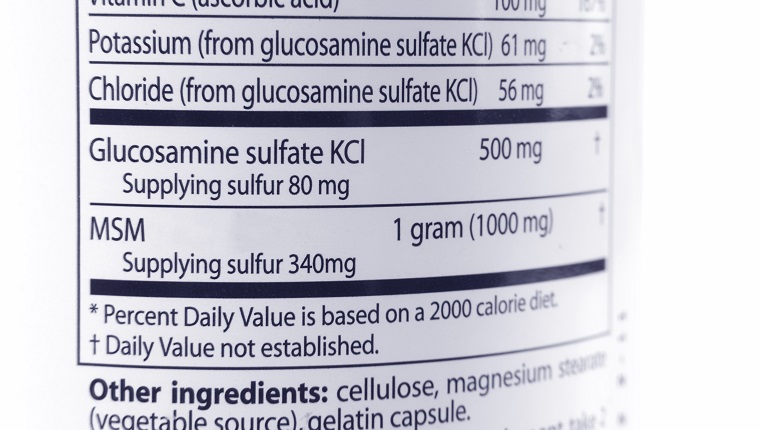Glucosamine is a compound that is produced naturally in dogs’ bodies and is mostly found in healthy cartilage. It can also be given to dogs in the form of supplements, or it can be present in the food that dogs eat.
Vets often use it to treat arthritis in dogs, though it can treat other painful joint and bone conditions, too. If you want to supplement your dog’s glucosamine intake, there are several things you should consider, including the delivery method, dosage, and possible side effects.
As always, you must ask your vet before beginning any at-home treatment with your pet. Here’s what you should know about glucosamine for dogs.
What Is Glucosamine?

Glucosamine is a natural compound made up of the amino acid glutamine and sugar, called glucose. Dogs’ bodies produce the compound, and it aids the formation of molecules that make up cartilage in joints.
It’s necessary for repairing wear and tear that happens to joints over time. When the body ages, it makes less glucosamine, which can lead to joint problems like arthritis. Supplementing glucosamine for dogs can help maintain the body’s ability to repair joints.
There are three major types of glucosamine. Glucosamine sulfate is the type that supplements contain most often. It’s extracted from shellfish shells or produced synthetically and contains sulfur, which helps in cartilage repair.
Glucosamine hydrochloride also comes from shells. However, it doesn’t have sulfur and is usually less effective.
N-acetyl-glucosamine is the the third type and is derived from glucose, which helps in the production of the synovial fluid that lubricates joints.
What Does Glucosamine Do?

Glucosamine supplements can provide relief from a number of health concerns in dogs. In addition to aiding in the repair of cartilage, it also has anti-inflammatory properties, which help reduce pain caused by degradation of cartilage in joints.
Vets may recommend supplements to treat conditions in dogs such as hip dysplasia and spinal disc injury in addition to arthritis. It can also aid in recovery after joint surgery and slow the aging process in joints.
N-acetyl-glucosamine, in particular, can improve and maintain gut health. It does so by aiding in the creation of connective tissues in the gastrointestinal system. This form can reduce inflammation in the digestive system and improve symptoms of irritable bowel disease.
How Should You Give Your Dog Glucosamine?

Glucosamine supplements for dogs can come in the form of tablets, pills, powders, or liquids. These are usually meant to be given daily.
They can be expensive and are sometimes made synthetically, rather than naturally extracted from shellfish shells. Synthetic supplements can sometimes lose their effectiveness more quickly than natural sources.
If you decide to give your dog supplements, you should ask your vet about proper dosage. Some dog foods claim to provide sources of glucosamine, but the amount they contain is often far less than what your dog needs to maintain joint health.
Vets sometimes recommend that dogs take methylsulfonylmethane (MSM) or chondroitin sulfate along with these supplements. Chondroitin sulfate is an extract from the cartilage of cows or sharks. Chondroitin helps cartilage retain water, and MSM improves joint flexibility and reduces pain and inflammation.
Another way to give glucosamine to your dog is through the food they eat. Foods that have lots of cartilage often contain high levels. Trachea, chicken feet, ox or pig tails, beef knuckle bones, bones that have a lot of cartilage, shellfish shells, green lipped mussel, and bone broth are all great sources of glucosamine.
Ask your veterinarian before making any diet changes for your dog.
Are There Side Effects?

Some side effects have been seen in dogs who take glucosamine. These are generally rare and mild, though if you see symptoms that concern you, contact your vet.
Here are a few possible side effects:
- Fatigue
- Insomnia
- Excessive thirst or urination
As with any medication or substance, there’s a risk of allergic reaction, especially in dogs who are allergic to shellfish. If it’s severe, an allergic reaction can lead to anaphylaxis. If you see the signs of an allergic reaction, get to your vet right away.
Because this compound contains glucose, a sugar, it may not be right for dogs with diabetes.
Do you give your dog glucosamine? Has it helped with their joints? Let us know in the comments below!




